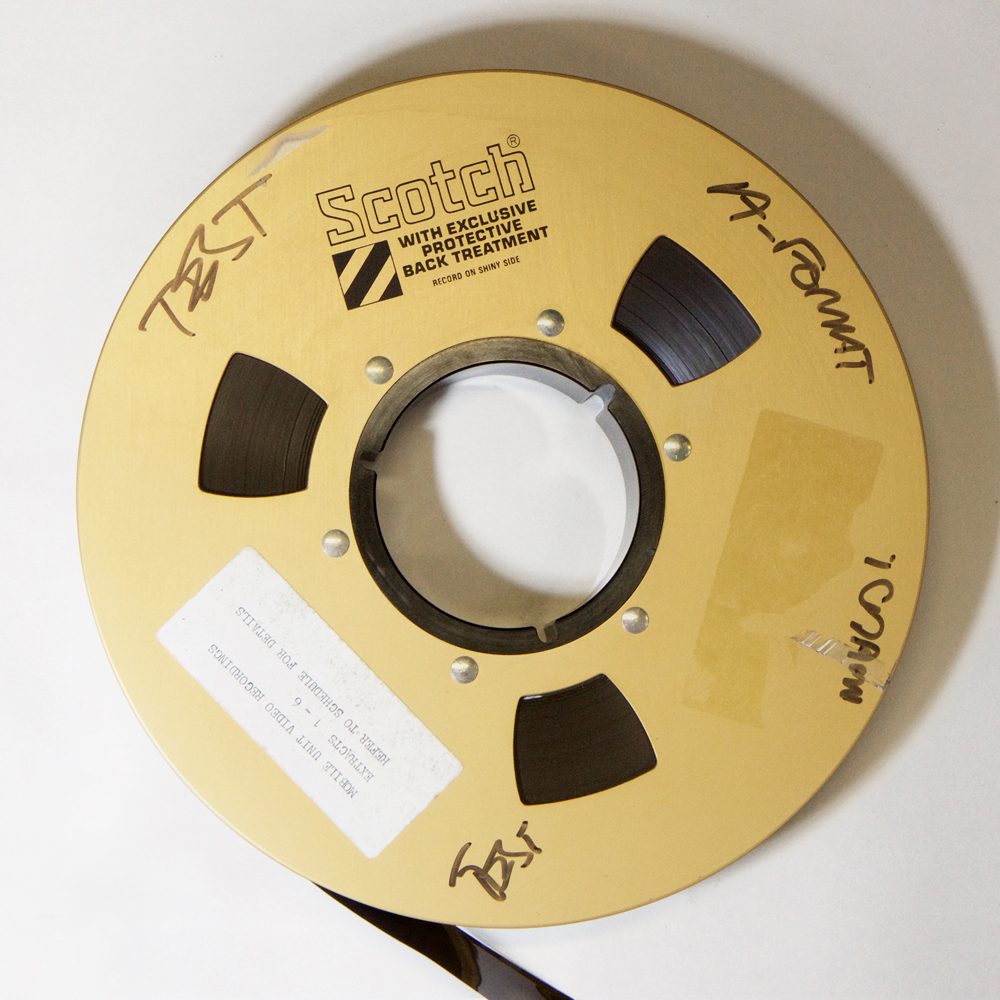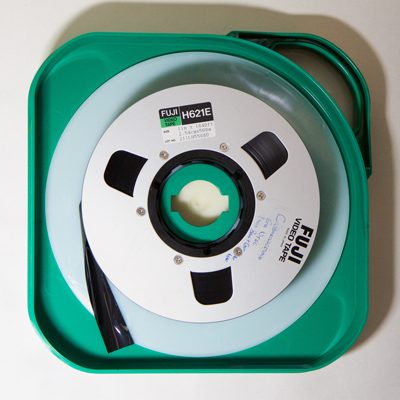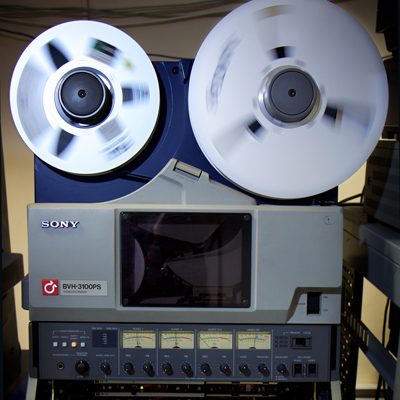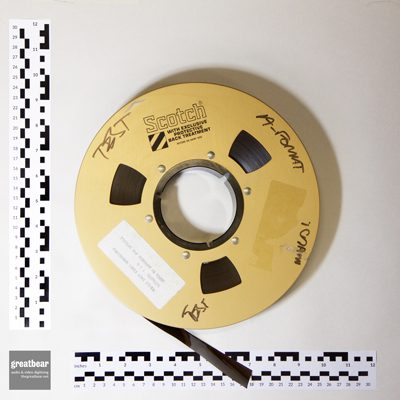introduction to 1 inch video tape type A, B & C transfer
At Greatbear we transfer multiple variations of 1 inch analogue video tape on open reels - from the rare type A format (Ampex, 1965), to type B (Bosch 1976) which was standard in Europe, and type C video tape (Ampex / Sony 1976), which was widely adopted by the professional video and broadcast television industries, particularly in the US & UK between the mid '70s to early '90s.
We are able to digitise all standards of 1 inch type A, B and C open reel video tape from the US (NTSC), UK (PAL) and (SECAM) with appropriate noise reduction. 1" type A video is commonly monochrome, while types B and C are colour. We now have access to a machine uniquely modified to play very rare type A colour tapes.
We offer a range of delivery formats for our video transfers. Following International Association of Sound and Audiovisual Archives TC-06 guidelines, we deliver FFV1 lossless files or 10-bit uncompressed video files in .mkv or .mov containers for archives. We can also produce Apple ProRes mezzanine files for ease of editing. We provide smaller viewing files as H.264 encoded .mp4 files or on DVD. We're happy to create any other digital video files, according to your needs.
We can provide the appropriately-sized USB delivery media for your files, or use media supplied by you, or deliver your files online. Files delivered on hard drive can be for any operating system MacOS, Windows or GNU/Linux and filesystems (HFS+, NTFS or EXT3).
1 inch reel-to-reel video recordings can vary both in duration and in the extent of physical tape degradation, so we always assess tapes before confirming the price of a transfer.
We offer free assessments - please contact us to discuss your project.
For an introduction to our assessment and treatment processes, please see our guide to "what happens to your video tape".
1 inch type A, B & C VTR machines
Ampex VR 5103 - A Format / PAL
Sony BVH 2000 x 2 - C Format / PAL & SECAM
Sony BVH 2000 - C Format / NTSC
Sony BVH 3100 P x 2 - C Format / PAL & SECAM
1 inch type A, B & C format variation
| 1” format | video standard | audio channels supported | Dolby A noise reduction | Telcom C4 noise reduction | Dolby SR noise reduction | PCM digital audio | 14” / 3 hour spools |
|---|---|---|---|---|---|---|---|
| A | PAL | 1 | n/a | n/a | n/a | n/a | n/a |
| B | PAL | 2 | ✓ | ✓ | n/a | n/a | n/a |
| C | PAL | 4 | ✓ | n/a | ✓ | ✓ | ✓ |
| C | NTSC | 4 | ✓ | n/a | ✓ | ✓ | ✓ |
Scroll to the right to view full table on smaller screens.
1 inch type A, B & C video tape risks & vulnerabilities
One inch open reel video tape is especially susceptible to risks associated with age, hardware, and equipment obsolescence. It is also prone to risks common to other types of magnetic media, such as mould growth, binder deterioration, physical damage, and signal drop-outs.
A significant problem for the transfer of 1 inch type A, type B and type C tape, is the rarity of machines capable of playing these formats. Their considerable weight (70 - 80 kg) made 1" video machines more difficult to transport and preserve than subsequent, smaller cassette-based machines.
Our 1" machines are arguably some of the more complex electro-mechanical machines we have at Greatbear, when compared with other professional broadcast formats.To fully recalibrate a 1 inch type C machine, for example, can take a few days because of its size and complexity.
Recalibration is complicated by machines having multiple components which all need to be aligned in a very careful way for the best quality transfer – it is not a simple case of adjusting the machine as a whole and everything works fine. Each separate transport mechanism requires attention. This is then checked against the other parts to ensure that the machine operates, and after that, the electronics. The recalibration process is complete when a machine plays back the tape in such a way that reflects the quality of the recording, rather inconsistencies in the machine.
Another major threat to the future of such analogue transfers is that the highly-skilled people who know how to maintain and fix these machines are disappearing, as are the spare parts needed to do so.
1 inch video tape brands / models
Common brands / models of 1 inch video tape include: 3M/Scotch 480; 3M/Scotch 480 XST; Ampex 196; BASF VT26; Fuji H621; Fuji H261E; Kodak EVT-1000; Sony V-16 SP and Sony V1-K.
1 inch type A, B & C VTR history
The Ampex Corporation introduced 1” (SMPTE) type A videotape in 1965. It was one of the first standardised helical scan open reel video tape formats in the 1” width. It was mainly used in industrial and institutional contexts because it did not conform to existing broadcast standards.
A significant problem was that the type A system did not record the vertical blanking interval, i.e. the time between the end of the final line of a frame or field and the beginning of the first line of the next frame. It was also restricted to 350 lines, while the NTSC standard was 525 and PAL / SECAM were 625 lines. The compromised quality of type A video led ultimately to the development by Ampex & Sony of the SMPTE approved type C format in 1976.
Despite being a composite video format like U-matic or VHS, (where video information is encoded on one channel), 1 inch type C has very high video quality. It approaches the quality of component video formats (where the video signal has been split into two or more component channels), as used in Betacam videotapes and the Panasonic MII.
The quality and reliability of 1 inch type C made it a mainstay in television and video production in television studios for almost 20 years, before being supplanted by more compact videocassette formats like Betacam, DVCAM, D-1, D-2 and DVCPro.





